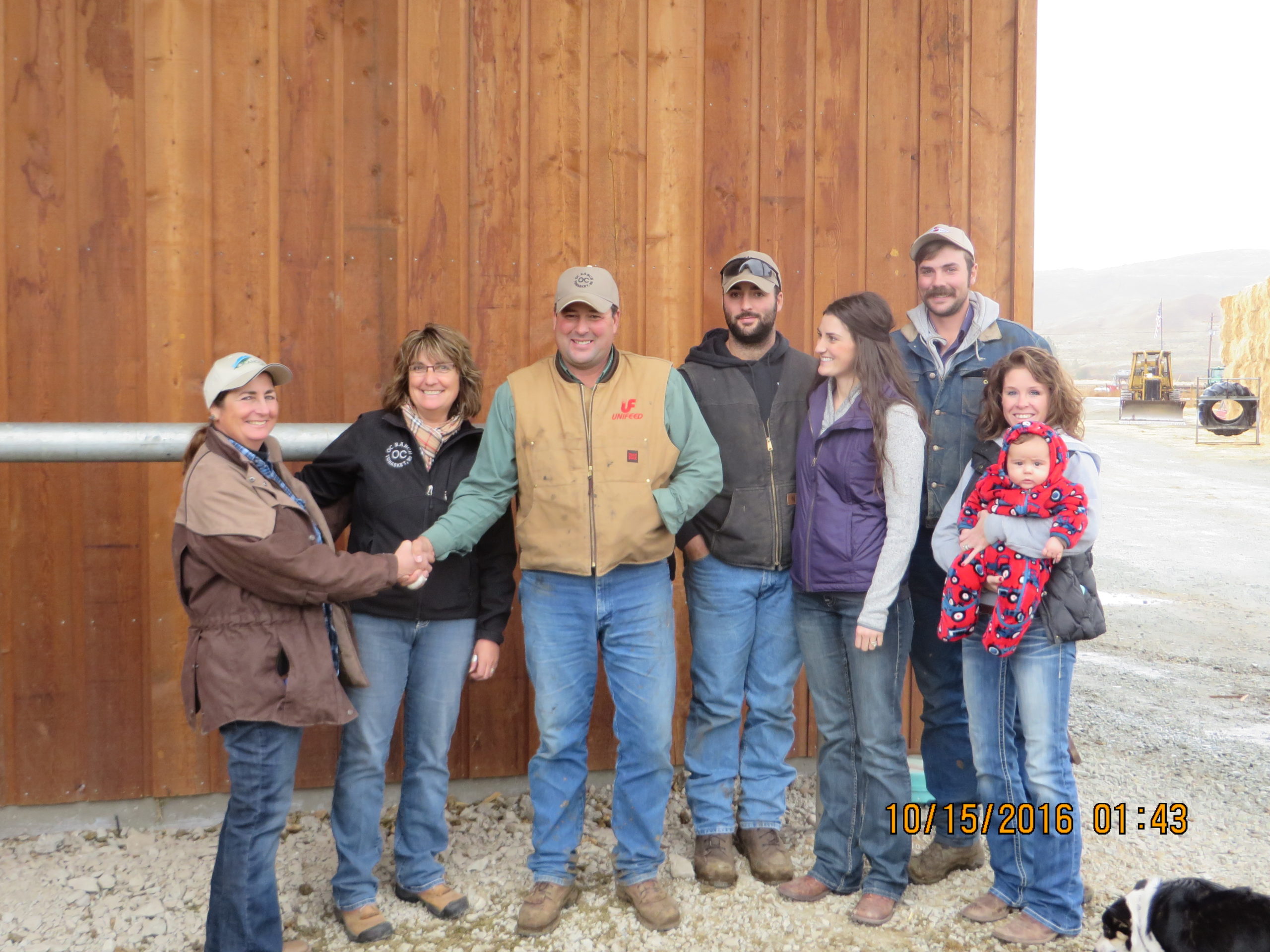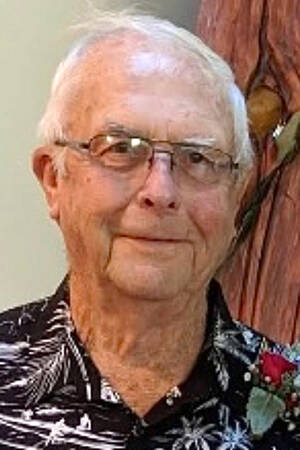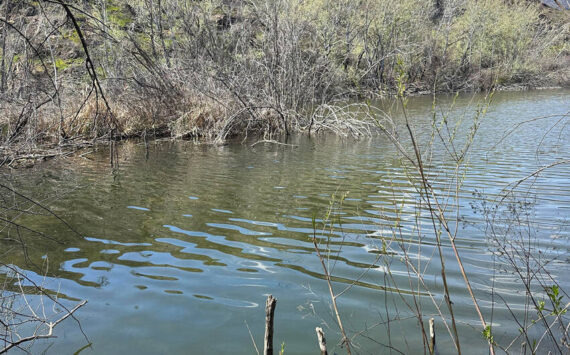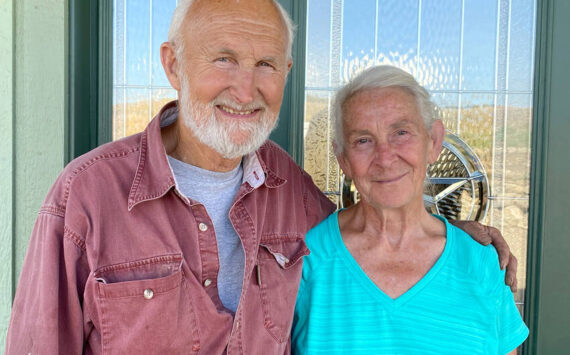Ranchland preserved for future generations
TONASKET – The Okanogan Land Trust was able to bring four years of persistent effort to a conclusion by finalizing the placement of a conservation easement on nearly 1600 acres in the Okanogan Highlands.

The family and members of the Okanogan Land Trust gathered for a picture (l-r) OLT President Cynthia Nelson, Noreen and Derek Olma, Trent and Shelby Rodgers and Austin, Nadine and Zane Olma.
Derek and Noreen Olma and family chose to protect working ranchland composed of high quality grasslands, valuable agricultural soils, and protect upland habitat for a wide range of priority wildlife species. The agricultural conservation easement secures permanent preservation of productive farmland that currently supports a high production corn and hay farm as well as a successful cattle ranching operation. Completing the easement will enable the Olmas to expand the ranch, expand their children’s role in the operation and plan the eventual transition of the farm to the next generation.
“We were surprised by how much of a challenge it was to work through all the different parts of the project but we stuck with the land trust and they stuck with us. We are just really pleased that everything came together and our wish to protect our property has been rewarded,” said Derek Olma.
The Olma project leverages and begins to link together Okanogan Land Trust’s (OLT) existing conservation efforts in the Okanogan Highlands, particularly the Schell, Nelson and Hays ranchland projects, all easements that were purchased with Recreation and Conservation Office (RCO) Farmland Preservation program funding. The program is part of the larger Washington Wildlife and Recreation Program (WWRP).
In 2005, the state Legislature expanded the WWRP to include preservation of significant farmland. The farmland preservation grant program provides funding to cities, counties, and others, like OLT, to buy development rights on farmlands to ensure the lands remain available for farming in the future. The primary tool used, a conservation easement, is a deed restriction landowners voluntarily place on their property to protect resources such as productive agricultural land, ground and surface water, wildlife habitat, historic sites or scenic views.
“This particular project is a key piece in a larger effort to protect contiguous ranchland in the Highlands to safeguard future livestock ranching opportunities that are greatly inhibited when existing grazing areas become fragmented by residential subdivisions,” said OLT Board President Cynthia Nelson.
The project is actually broken into three separate parcels with 321 acres of farmland located east of Tonasket. The remaining two parcels, totaling close to 1275 acres, are located south and slightly west of the historic town of Molson. The northern properties are all high quality grasslands. Approximately one mile of Siwash Creek, a tributary to the Okanogan River that provides critical cold water flows for fish, runs through the southern property. In addition to protecting the agricultural values and wildlife habitats on the property, this project will keep more than 100 acres of water rights intact and preserve scenic views.
“We need to acknowledge the work of former staffers Jacquelyn Wallace and Thom Woodruff in keeping this farmland preservation project on track and moving forward.” said OLT’s Executive Director Jerry DeBacker, “OLT is fortunate to have such patient, and charitably inclined, partners as the Olmas and a focused board that worked together to protect this shared landscape.”







